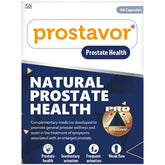Fibroids
Uterine fibroids, also known as leiomyomas or myomas, are non-cancerous growths of the uterus that often appear during childbearing years. They are not associated with an increased risk of uterine cancer and almost never develop into cancer. This article provides an in-depth look at fibroids, including their definition, symptoms, causes, diagnosis, treatment options, and prevention.
Definition
Fibroids are benign tumors that originate from the muscle tissue of the uterus. They vary in size, shape, and location within the uterus. They can be single or multiple and can grow inside the uterine cavity, within the uterine wall, or on the surface of the uterus.
Types of Fibroids
Fibroids are classified based on their location:
-
Intramural Fibroids:
- Develop within the muscular wall of the uterus.
-
Submucosal Fibroids:
- Grow into the uterine cavity.
-
Subserosal Fibroids:
- Project to the outside of the uterus.
-
Pedunculated Fibroids:
- Attached to the uterine wall by a stalk-like structure.
Symptoms
While many women with fibroids have no symptoms, others may experience:
-
Heavy Menstrual Bleeding:
- Prolonged periods, bleeding between periods, or passing clots.
-
Pelvic Pain and Pressure:
- Pain or pressure in the pelvis, lower back, or legs.
-
Frequent Urination:
- Pressure on the bladder can cause frequent urination or difficulty emptying the bladder.
-
Constipation:
- Pressure on the rectum can cause bowel issues.
-
Pain During Intercourse:
- Fibroids can cause discomfort or pain during sexual activity.
-
Enlarged Abdomen:
- Larger fibroids can cause the abdomen to appear distended.
Causes
The exact cause of fibroids is unknown, but several factors may contribute to their development:
-
Hormones:
- Estrogen and progesterone, hormones that stimulate the development of the uterine lining during each menstrual cycle, appear to promote the growth of fibroids.
-
Genetics:
- A genetic component may play a role, as fibroids often run in families.
-
Growth Factors:
- Substances that help the body maintain tissues, such as insulin-like growth factor, may affect fibroid growth.
Diagnosis
Methods to diagnose fibroids include:
-
Pelvic Exam:
- A doctor can feel the shape and size of the uterus during a pelvic examination.
-
Imaging Tests:
- Ultrasound: Uses sound waves to create a picture of the uterus and can confirm the presence of fibroids.
- MRI: Provides detailed images of fibroids and helps in planning treatment.
- Hysterosonography: Uses saline to expand the uterine cavity for better imaging.
- Hysterosalpingography: Uses a dye to highlight the uterine cavity and fallopian tubes on X-ray images.
- Hysteroscopy: Involves inserting a small, lighted telescope through the cervix to examine the inside of the uterus.
Treatment Options
Treatment depends on the size, number, and location of the fibroids, as well as symptoms and desire for future pregnancies:
-
Medication:
- Hormonal Therapy: Birth control pills or other hormonal treatments can help control heavy bleeding and pain.
- Gonadotropin-Releasing Hormone (GnRH) Agonists: These drugs reduce estrogen and progesterone levels, shrinking fibroids.
- Non-Hormonal Medications: NSAIDs for pain relief and tranexamic acid to reduce bleeding.
-
Minimally Invasive Procedures:
- Uterine Artery Embolization (UAE): Blocks blood flow to fibroids, causing them to shrink.
- Myolysis: Uses heat or electric current to shrink fibroids.
- Endometrial Ablation: Destroys the lining of the uterus to reduce heavy bleeding.
- MRI-Guided Focused Ultrasound Surgery (FUS): Non-invasive procedure that uses high-frequency sound waves to destroy fibroids.
-
Surgical Procedures:
- Myomectomy: Removal of fibroids while preserving the uterus.
- Hysterectomy: Removal of the uterus, a permanent solution that eliminates fibroids but also ends fertility.
Prevention
While fibroids cannot be completely prevented, certain lifestyle changes may reduce the risk:
-
Maintain a Healthy Weight:
- Obesity is linked to an increased risk of fibroids.
-
Healthy Diet:
- Consuming a diet high in fruits, vegetables, and whole grains, and low in red meat may help.
-
Regular Exercise:
- Physical activity may help maintain a healthy weight and hormone levels.
Complications
Fibroids can lead to complications such as:
-
Anemia:
- Due to heavy menstrual bleeding.
-
Pregnancy Issues:
- Increased risk of cesarean section, preterm delivery, and breech births.
-
Infertility:
- In rare cases, fibroids can block the fallopian tubes or interfere with implantation.
Conclusion
Uterine fibroids are a common condition that can cause significant symptoms and affect a woman's quality of life. Understanding the types, symptoms, and treatment options can help women make informed decisions about their health. With proper medical care and lifestyle adjustments, managing fibroids is possible, allowing women to lead healthier, more comfortable lives.
In summary, while fibroids can be challenging to deal with, advances in medical treatment and a deeper understanding of the condition provide numerous options for effective management and relief from symptoms. Regular check-ups and open communication with healthcare providers are key to finding the best treatment plan.
- Complication of Fibroids
- Diagnosis of Fibroids
- Fibroids
- Fibroids myths
- How is Fibroids treated?
- Medicine for Fibroids
- Remedies for Fibroids
- Support for Fibroids
- Symptoms associated with Fibroids
- The best British Online Pharmacy
- Top 10 UK Pharmacies
- Treatment for Fibroids
- What causes Fibroids
- What is Fibroids
- Where can I buy medicine for Fibroids in the UK
- ZimSeller Pharmacy



















